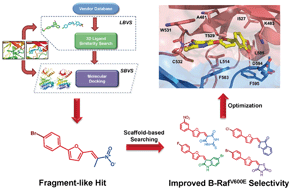Development of a novel class of B-RafV600E-selective inhibitors through virtual screening and hierarchical hit optimization†
Abstract
Oncogenic mutations in critical nodes of cellular signaling pathways have been associated with tumorigenesis and progression. The B-Raf


 Please wait while we load your content...
Please wait while we load your content...